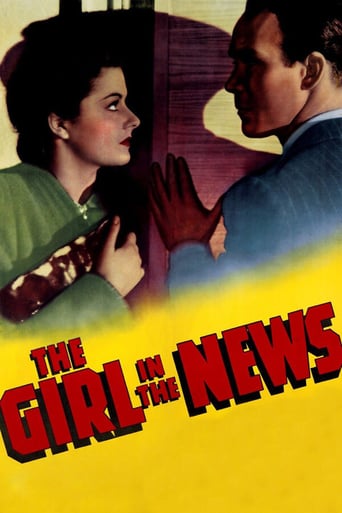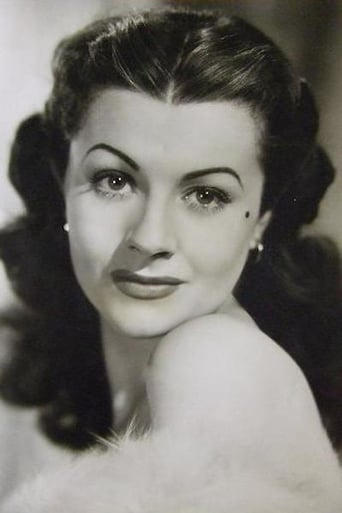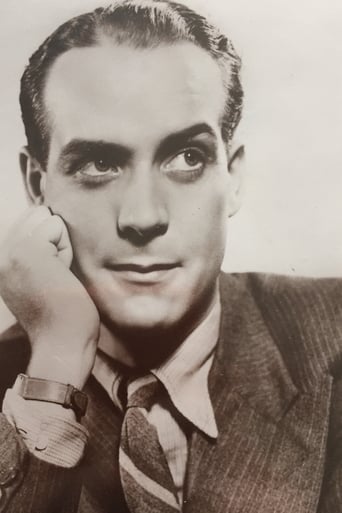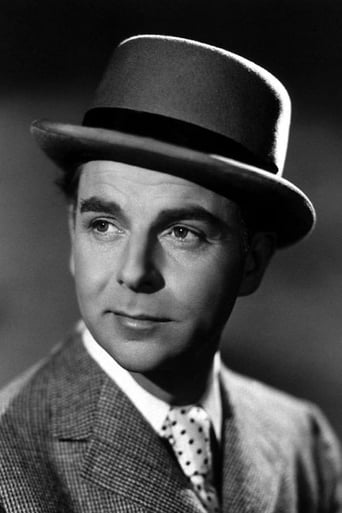Girl in the News (1940)
An elderly lady manages to sneak some pills away from her nurse and dies of an overdose. The nurse is tried for murder and acquitted. Some time later the nurse, under a new name and identity, cares for a patient who also dies of an overdose. When her real identity comes out, suspicions arouses.
Watch Trailer
Free Trial Channels
Cast


Reviews
if their story seems completely bonkers, almost like a feverish work of fiction, you ain't heard nothing yet.
It is interesting even when nothing much happens, which is for most of its 3-hour running time. Read full review
A clunky actioner with a handful of cool moments.
The storyline feels a little thin and moth-eaten in parts but this sequel is plenty of fun.
Very good script by Gilliat based on a novel. Likable protagonists and support characters, as well as nearly-likable villains in a wonderful cast who work pleasingly together. I'm glad Barnes, not Redgrave (apparently as originally planned), fell into the role of "Stephen." Barnes is gentlemanly distant and professional, but obviously protective of Lockwood as friend and client. Redgrave might have handled the role in a cheesier, more intimate manner, not appropriate in this quiet script. Livesey provides a friendly but professional touch as Barnes' policeman flat-mate.Refreshing to see characters interact without sturm und drang for a change, in well-paced unfolding of Barnes' defense of Lockwood.Enjoyed this movie very much. There aren't many that succeed in first gear - maybe "A Canterbury Tale" is another such, but there aren't many others.
Margaret Lockwood is "The Girl in the News" as a nurse who is acquitted of murder, only to find herself accused again. Carol Reed directed, and besides Lockwood, it stars Emlyn Williams and Roger Livesey. Lockwood is Anne Graham, a young nurse working in a household when her invalid employer takes too many sleeping pills. Graham is accused of murder but acquitted. However, she finds getting a job impossible until she changes her name. Someone mails her a classified ad for a nursing job, for which she applies and is accepted. Then history repeats itself.A very good film, excellently directed by Reed with an underplayed performance by Lockwood. Emlyn Williams plays her attorney. Though I figured this film out before the plot unfolded, "The Girl in the News" is still good and worth seeing.
"Nurse required to attend invalid in quiet Surrey village; 22-26; hospital trained but experience in private nursing essential. Apply sending details and photograph to Mrs. Bentley, Camthorpe House, Camthorpe, Surrey." The advertisement might have added, "Also essential: Nurse must be thought guilty, even though she was acquitted at trial, of murdering a previous invalid in her care."Anne Graham (Margaret Lockwood) had gone on trial for murdering the self-centered, sick woman she had been caring for. Sleeping pills were the means; a small legacy was the motive. Everyone assumed Anne had done it done. A resourceful young barrister, Stephen Farringdon (Barry K. Barnes), was able to plant enough seeds of doubt in the jury's mind to get her off. Even he thinks she might have done it. She now finds she's unemployable. Who wants a suspected murderer for a nurse? Fortuitously, she receives in the mail a newspaper with an advertisement for a nurse. The location is in Surrey, some way from London. She applies, is interviewed, and is hired. She is to take care of a wealthy older man, Mr. Bentley, who is confined to a wheelchair. The man's attractive wife, Mrs. Bentley, is most solicitous. Tracy the butler watches it all. And then we realize that the butler had been present at Anne's trial.As you might suppose, it's not long before Mr. Bentley has died from an overdose of sleeping pills. A codicil to his will gives a small legacy to Anne. And now the police are convinced Anne killed both of her patients. Fortunately, Stephen Farringdon has cast aside his original doubt. He finds himself falling in love with Anne, and he is shrewd enough to think this second murder is a clever plot to make Anne look guilty while the real killers, who now will be wealthy, move on.There are no plot surprises. This is a "How's she going to get out of this" mystery. For the first 35 minutes, we have the set up. For the last 45 minutes, the extrication. Much depends on the appeal of Margaret Lockwood. In the Forties she became one of Britain's greatest stars. It was hard to beat her as a plucky, intelligent heroine or as a manipulating villain. Either way, she was an immensely likable personality. Others in the cast speak to the great depth of acting Britain could put in its films when it chose to. Roger Livesey plays a detective, Farringdon's friend, and he brings a lot of charm to the film. He has that inimitable voice, husky, friendly, and a little skeptical. In small parts, often unbilled, are such fine actors as Roland Culver, Leo Genn, Mervyn Johns, Felix Aylmer and Basil Radford. Unfortunately, the movie suffers because neither the male lead nor the villain strikes many sparks. It's particularly unlikely that Tracy, small, smug and supercilious, would be any woman's hetero heartthrob. And Farringdon is one of those lean, polite, cultured types who seem to think a second glass of sherry might be too exciting for their girl friends. The movie would benefit, in my view, by having two strong, attractive actors dealing with Margaret Lockwood.Carol Reed gives us a clever murder thriller with some nice touches, from a black kitten tugging at the hem of a night dress while a petulant, sick woman slowly creeps her way to the medicine chest, to a humorous bit of misdirection involving a detective and a crook. Reed and screenwriter Sidney Gilliat know how to create characters that have enough detail to be interesting. Gilliat, who with his partner, Frank Launder, either together or separately, either working as writer, director or producer, or in any combination, were responsible for some great Forties movies, too: Green for Danger, The Belles of St. Trinian's. I See a dark Stranger, The Rake's Progress, The Lady Vanishes, Night Train to Munich, among others.
Core to the plot is the extent to which a justifiable acquittal at a trial nevertheless prejudices the accused's future life. Given modern day concerns over sensational press coverage this is an issue as valid today (probably more so) than it was in war-time Britain. But the film does not follow this line, rather it presents us with a good old-fashioned courtroom drama, culminating in a finale of which Perry Mason would have been proud. Quite how the hero lawyer manages this stretches the judicial imagination somewhat, especially with a flawed witness, whose evidence clinches the outcome, not having to testify from the witness box.Despite these reservations this is an enjoyable enough production which canters along at a good pace without any pretensions to high art. And it was nice to see some early work from two actresses, Irene Handl (particularly malevolent as the first "victim") and Kathleen Harrison, who both went on to greater things in post-war British TV.








